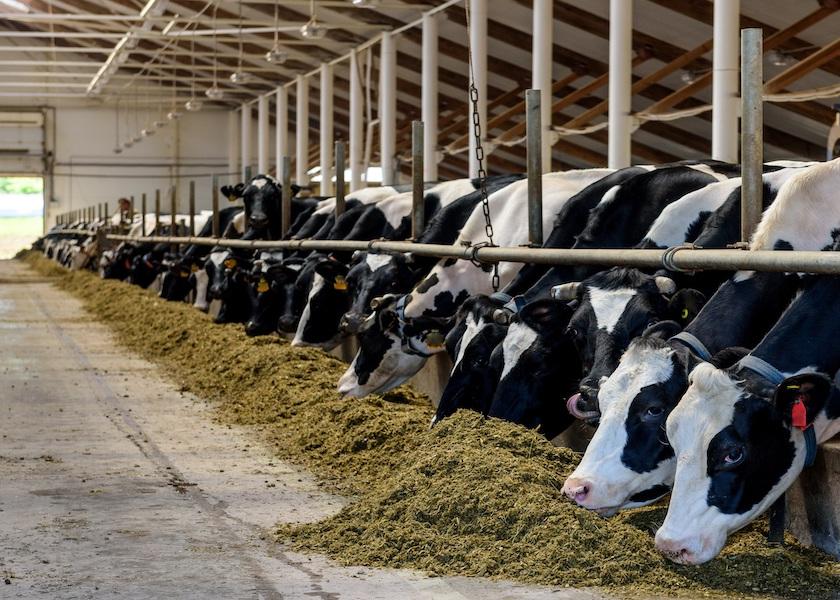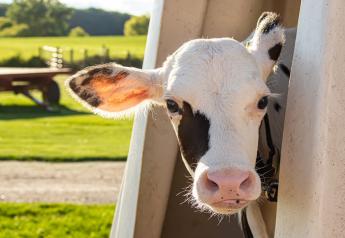Will the 305-Day Lactation Standard Go the Way of the Dinosaur?

Many of today’s dairy cows are still milking heavily at dry off. In fact, nutritional strategies and commercial products have been developed to help cows diminish milk production and prevent mastitis and other health challenges at the end of lactation.
This begs the question: if a cow is still milking 100 pounds a day after 10 months of lactation, would it be better to allow her to keep milking, if she wasn’t pregnant and due to calve again?
For decades, 305 days of lactation, plus a 60-day dry period, has added up to a dairy cow’s target calving interval of 1 year. But is this a standard that needs to be broken? Dairy researchers worldwide are exploring the possibility of lengthened lactations, based on the realities of modern dairy production.
The topic is explored in a recent article published in the Journal of Animal Science by Dutch researchers from Wageningen University and Research, and another in the journal Animal by researchers at Aarhus University in Denmark. Their shared rationale for longer lactations included:
- With fewer calvings, cows would pass less frequently through the transition period of giving birth and freshening, which is considered the riskiest time for cow health.
- Sexed semen and genomic selection have allowed for more strategic development of replacement heifers, resulting in the need for fewer surplus calves.
- A longer voluntary waiting period (VWP) before rebreeding could potentially improve fertility by allowing them to return to a state positive energy balance upon insemination.
- Longer lactations would result in reduction in labor associated with drying off, calving, and disease treatments.
Conversely, the researchers also explored the potential downside of extended lactation. Those factors included low milk production at the end of lactation, and cows becoming over-conditioned prior to calving. On a herd level, another result would be less total meat produced annually, due to fewer calves being born.
Another potential drawback relates to herd-wide genetic progress. If a herd’s highest-producing cows are selected for extended lactation, the contribution of their superior genetics would be reduced because they would be producing fewer offspring. This challenge could be addressed by using advanced reproduction technologies like embryo transfer and ovum pick-up to multiply their genetics more rapidly.
One research-confirmed observation made by both teams was that first-calf heifers have greater lactation persistency compared to multiparous cows. The Danish researchers noted that first-lactation cows promote nutrient partitioning into both milk production and body growth, whereas multiparous cows are done growing.
“This might explain why extending the lactation of primiparous cows seems more advantageous than for multiparous cows,” they noted. The Danish group cited two studies – both examining just single lactations – showing that extended lactation was more advantageous for primiparous cows versus multiparous cows in terms of daily milk yield and economic profitability.
While multiple factors for an individual herd would play into decisions to adopt extended lactations, the researchers discussed three approaches that could be applied to embrace the strategy: (1) adjust the entire herd to a longer calving interval; for example, 18 months; (2) set a longer calving interval for first-calf heifers by delaying their breeding with a longer VWP, while maintaining a standard, 305-day lactation and 12-month calving interval for second-lactation and older cows; and (3) use pre-determined, individual-cow metrics to set optimum breeding dates and lactation lengths for each animal in the herd.
Both the Danish and Dutch papers focused on the limited studies that have been conducted evaluating various factors at play in extended lactation. It is an area of research interest that both teams said requires more in-depth study in the future.
For more on herd health, read:
- Is it Time to Rethink Dairy Cow Lifespan?
- Six Signs She May Be Lame
- Tips to Determine the Right Number of Replacement Heifers for Your Dairy







